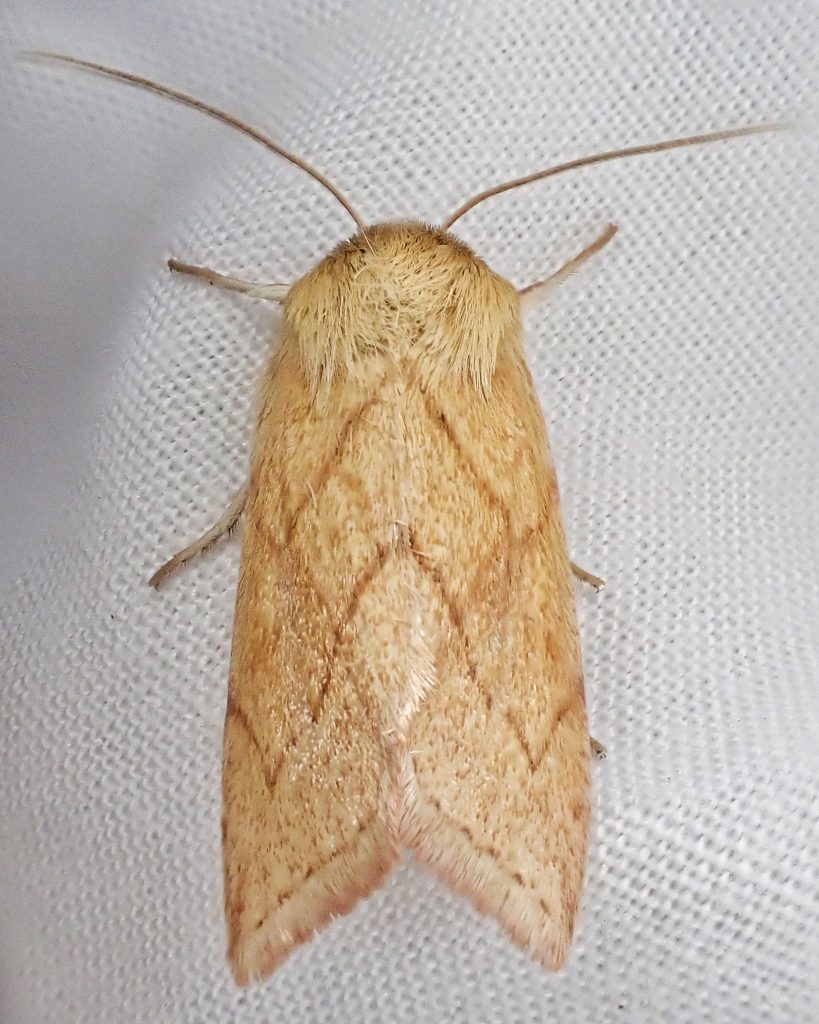
As I mentioned in ‘A Trip to Canyon Creek’, this handsome little noctuid moth with the fun to say appellation Zosteropoda hirtipes (V-lined quaker moth) was the first macromoth to show up to my lights that evening. It also may have been the most abundant, with at least a half dozen of them making an appearance that night. That may not seem like very many, but considering that, due to being in a small clearing within a fairly dense forest, my UV light was only visible within a very irregularly shaped area that was probably less than five acres, that is actually a fairly large number. Even on nights when I get a large amount of diversity, it is not uncommon to not get more than 3 or 4 of any given species.
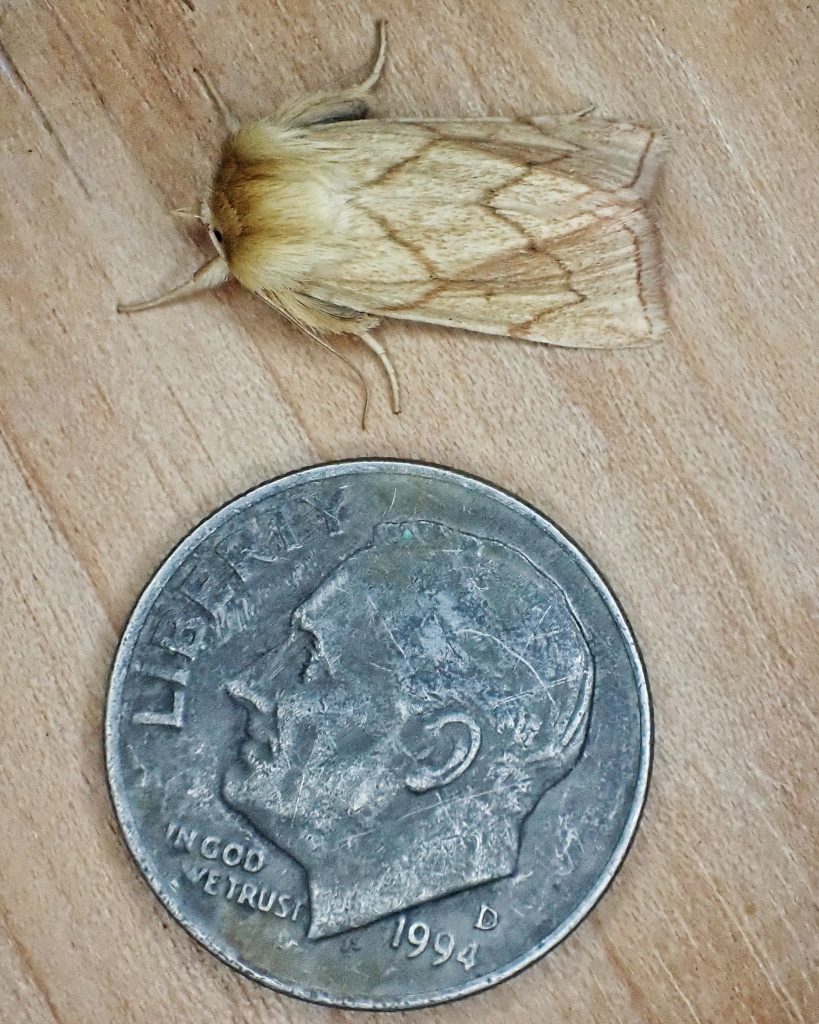
That is why, when I’m feeling ambitious, I often set up more than one light, with the second one in a place where the first is not visible. Not only does this increase the area from which I can draw nocturnal invertebrates, but it gives me something to do whilst awaiting a new crop of visitors. I didn’t do this on my last trip to Canyon Creek because there wasn’t a particularly good spot to erect a structure for a light along the trail between the road where I’d parked my van and the clearing where I did set up, and I couldn’t easily access the far end of the clearing because of a wall of Himalayan blackberries. But I did note an overgrown trail leading through those blackberries, and I will definitely be bringing some clippers to open up that path the next time I venture up to that spot.
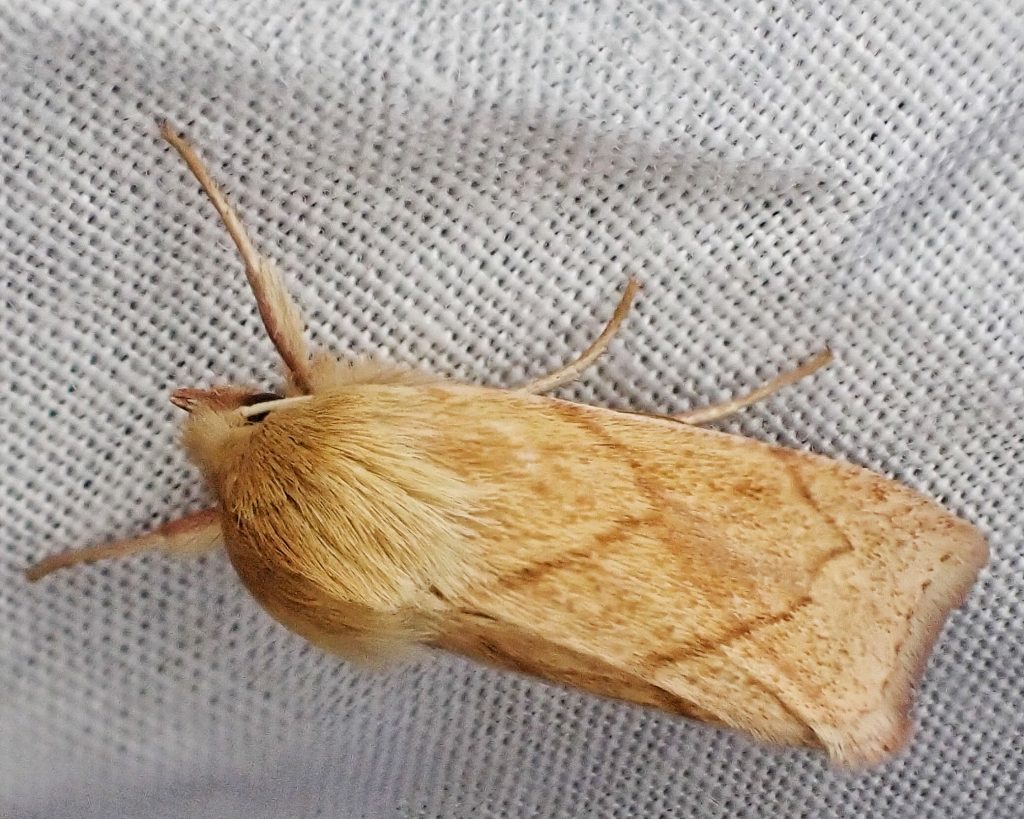
Description– “Zosteropoda hirtipes is a small, yellow-brown to light orange-brown moth (FW length 12 – 14 mm) with a distinctive pattern of angulated red-brown lines on the forewing. The forewing has a pointed apex and straight outer margin above the anal angle. The color is light ochre, usually suffused with orange…The antemedial and postmedial lines are similar, dark orange to gray, single. These lines are nearly parallel. Both are strongly angled toward the outer marginnear the costa, bent acutely on the anterior third of the wing, and then strongly angled toward the base to the trailing margin…The hindwing is light gray with a strong suffusion of dark gray, dark veins, and a diffuse postmedial line.” PNW Moths | Zosteropoda hirtipes
Similar species– There is nothing else in our region with this combination of coloring and sharply pointed antemedial and postmedial transverse lines.
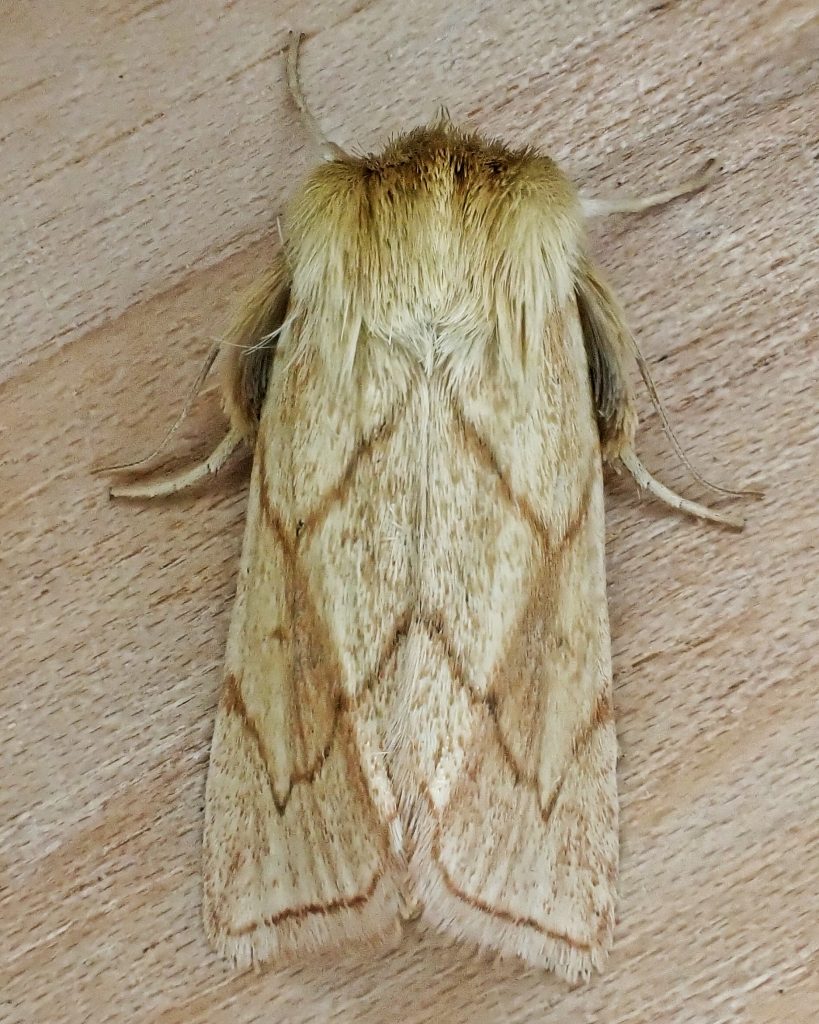
Habitat– “This species is widely distributed in moist forest habitats throughout much of western North America. In the Pacific Northwest, it is particularly abundant in coastal rainforests, mixed hardwood forests, moist grasslands, and even urban areas at low elevations west of the Cascades. It also occurs in mixed hardwood-conifer forests of the Cascades and Rocky Mountain regions at middle elevations, but is usually less common.” PNW Moths | Zosteropoda hirtipes
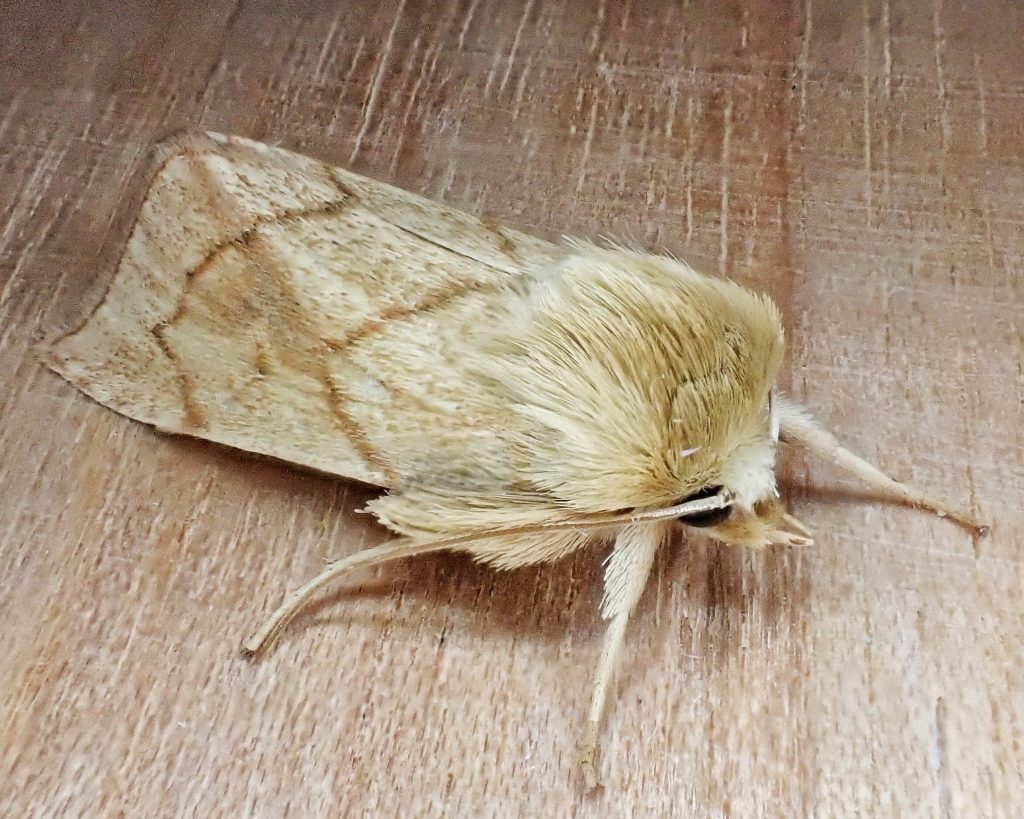
Range– “The range of this species extends south from our region to southern California along the Pacific Coast and to Colorado in the Rocky Mountains. It has been collected in extreme southwestern Alberta near the British Columbia border.” PNW Moths | Zosteropoda hirtipes
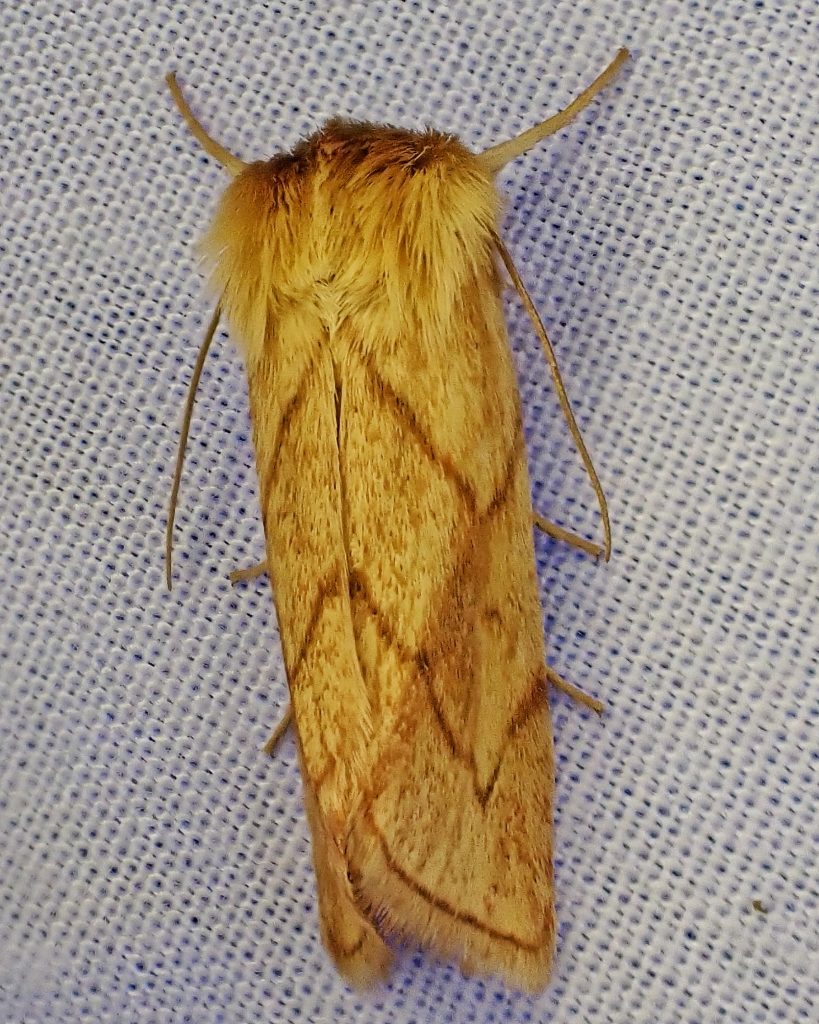
Eats– “This species is a climbing cutworm that feeds on many kinds of herbaceous vegetation in such families as the Asteraceae, Fabaceae, and Poaceae, but will also feed on hardwood shrubs such as willows (Salix spp.) in the Salicaceae and alders (Alnus spp.) in the Betulaceae.” PNW Moths | Zosteropoda hirtipes
Eaten by– Presumably any insectivores which can find,catch, and subdue them.
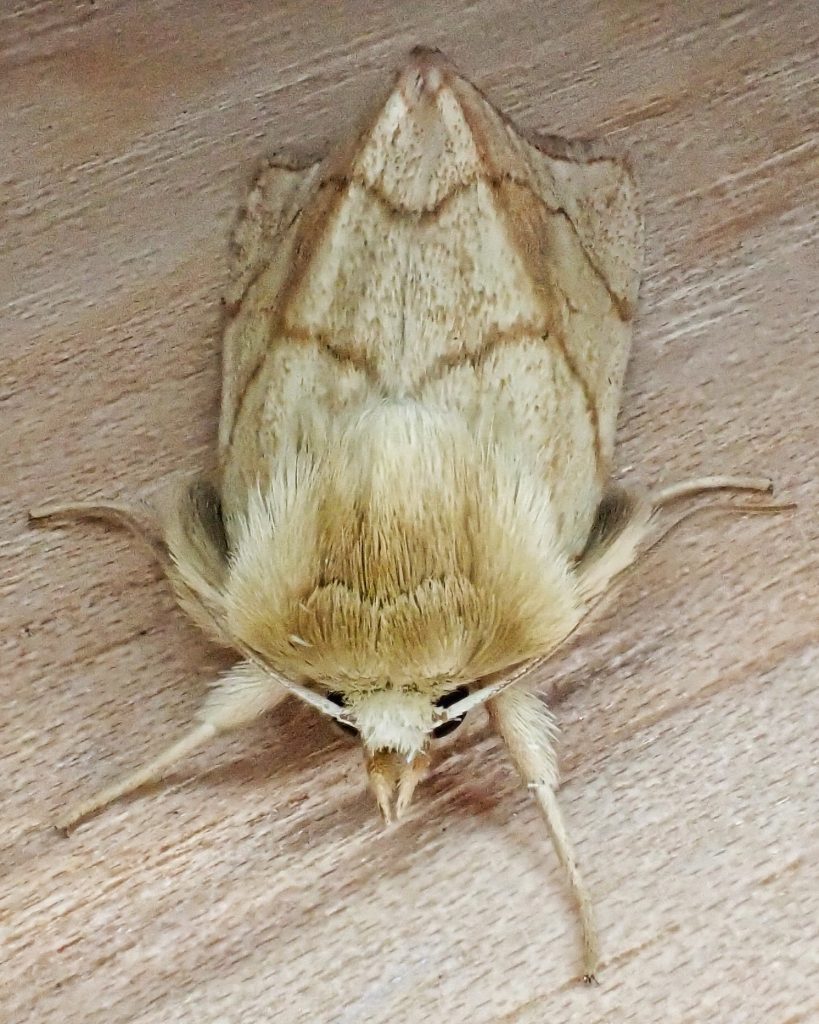
Adults active– “…flies during the summer. It has been collected from early June to early August. Most of our records are from late June and early July.” PNW Moths | Zosteropoda hirtipes
Life cycle– Seems to be univoltine; based on timing of the adult emergence, probably overwinters as a larvae in diapause.
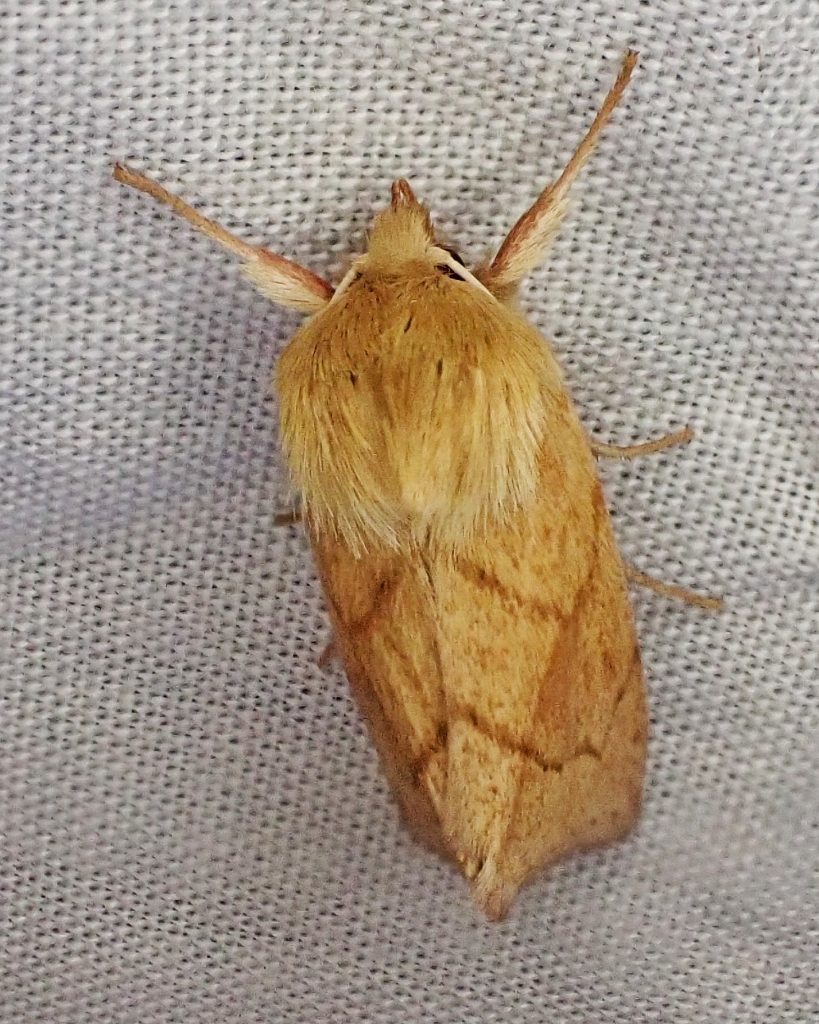
Etymology of names– Zosteropoda is from the “Greek zoster (ζωστηρ)- “belt, girdle” + podos(ποδος)- “of foot, leg”Genus Zosteropoda – BugGuide.Net and probably refers to what Grote, in his original description of this genus, called their “ extraordinarily tufted middle and hind legs.” The specific epithet hirtipes is from the “Latin hirtus- “rough, hairy, shaggy” + pes- “foot””Species Zosteropoda hirtipes – V-lined Quaker Moth – Hodges#10607 – BugGuide.Net and probably refers to “tibial tufts dusky” that Grote mentions in his original description of this species.
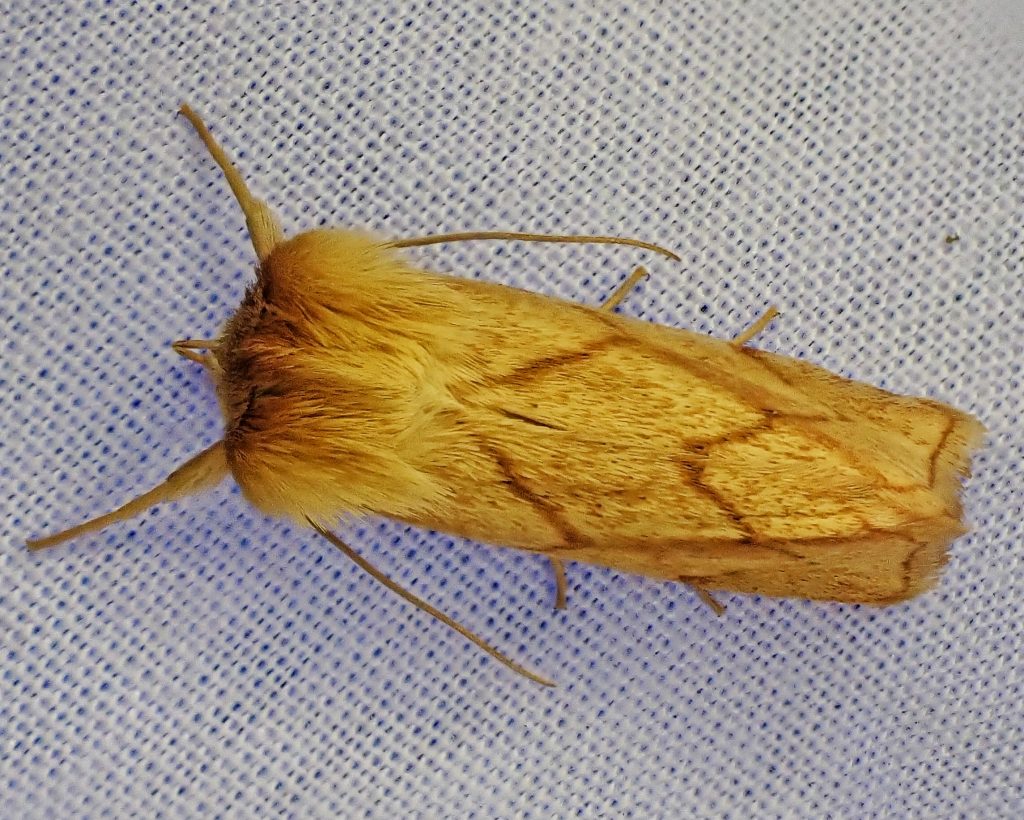
PNW Moths | Zosteropoda hirtipes
Species Zosteropoda hirtipes – V-lined Quaker Moth – Hodges#10607 – BugGuide.Net
Genus Zosteropoda – BugGuide.Net
http://mothphotographersgroup.msstate.edu/species.php?hodges=10607
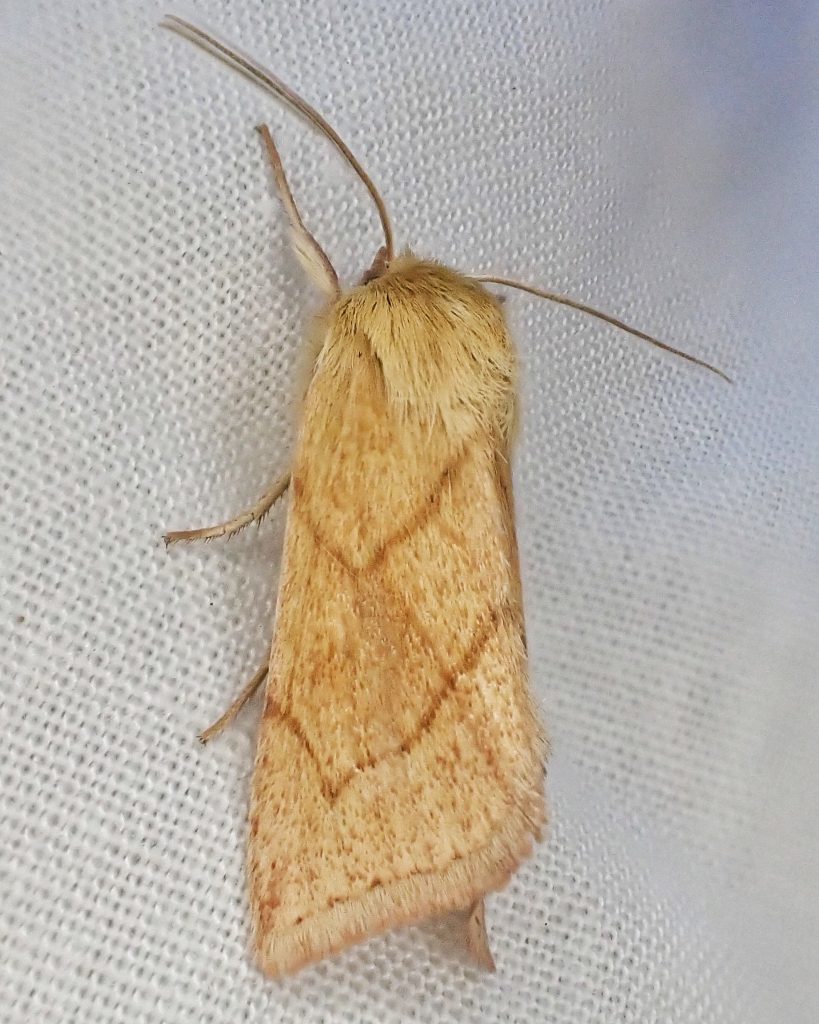
I have been enjoying your “moth” posts. They are so beautiful when one has time to really look at them up close like this. Thanks!
They really are! Thanks for your appreciation, Dina!
That is one of the cutest little moths I’ve ever seen!
They are adorable!